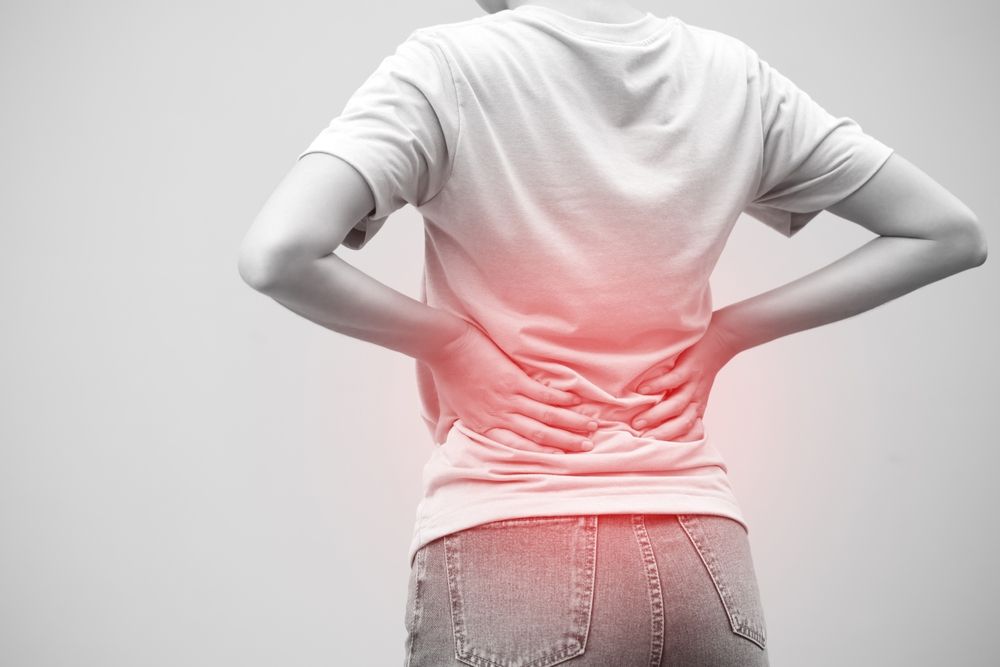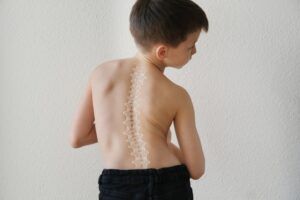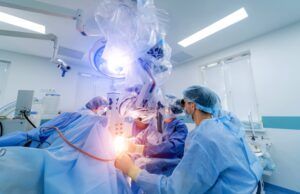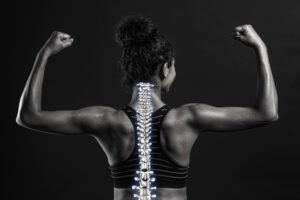Back pain is one of the most common health complaints, affecting millions of people worldwide. It can disrupt daily life, limit mobility, and significantly impact overall well-being. At Spine, Neck, & Back Specialists, Dr. Jay Reidler provides comprehensive care for back and spinal conditions, serving patients in Bloomfield, Englewood, and Union City, NJ. We’re pleased to announce that we now accept Cigna PPO, among many other insurance plans. Please contact us for more information.
Understanding the Anatomy of the Spine
The spine is a complex structure composed of bones, nerves, muscles, and connective tissues that work together to support the body and protect the spinal cord. It is divided into three main regions:
- Cervical Spine: The neck region, consisting of seven vertebrae (C1 to C7).
- Thoracic Spine: The upper and mid-back, containing twelve vertebrae (T1 to T12).
- Lumbar Spine: The lower back, made up of five larger vertebrae (L1 to L5).
Each vertebra is cushioned by a disc, which acts as a shock absorber, and stabilized by muscles and ligaments that maintain proper alignment. Nerves exit the spinal column through small openings between the vertebrae, controlling movement and sensation throughout the body.
Common Causes of Back Pain
Back pain can arise from a variety of conditions, injuries, and lifestyle factors. Understanding the root cause is essential for effective treatment. Here are some common sources of back pain:
1. Muscle Strain and Sprain
Strained or sprained muscles and ligaments are a leading cause of acute back pain. These injuries often occur due to heavy lifting, sudden movements, or poor posture. Muscle strains usually cause localized pain that can be relieved with rest and over-the-counter medications.
Treatment: Rest, ice, physical therapy, and anti-inflammatory medications are often effective in managing mild muscle strain.
2. Herniated Disc
A herniated disc, also known as a slipped or ruptured disc, occurs when the soft inner core of a spinal disc pushes through its outer layer. This can compress nearby nerves, causing pain, numbness, or weakness, especially in the lower back or neck.
Treatment: Non-surgical options like physical therapy, anti-inflammatory medications, and epidural injections are commonly used. In severe cases, surgery may be necessary to remove or repair the damaged disc.
3. Spinal Stenosis
Spinal stenosis is the narrowing of the spinal canal, which puts pressure on the spinal cord and nerves. This condition often leads to back pain, numbness, and weakness, particularly in the legs. It is common in older adults due to age-related changes in the spine.
Treatment: Physical therapy, pain management, and medications can help manage symptoms. Surgical options like laminectomy or spinal decompression may be recommended for severe cases.
4. Scoliosis
Scoliosis is a condition where the spine curves abnormally to the side. It can cause back pain, muscle fatigue, and an uneven posture. Scoliosis can develop in childhood or adolescence, but adult-onset scoliosis is also possible due to degeneration.
Treatment: Bracing, physical therapy, and exercises are often recommended. In severe cases, surgery may be needed to correct the spinal curvature.
Chronic Back Conditions
In addition to acute injuries, some back pain is caused by chronic conditions that develop over time. These conditions may require long-term management:
1. Degenerative Disc Disease
Degenerative disc disease is a condition where the spinal discs lose their flexibility and cushioning due to wear and tear. This can lead to chronic back pain, stiffness, and discomfort.
Treatment: Physical therapy, pain management, and lifestyle modifications like maintaining a healthy weight can help alleviate symptoms. Surgical options like spinal fusion may be considered in severe cases.
2. Osteoarthritis
Osteoarthritis is a degenerative joint disease that affects the spine’s facet joints, causing pain, stiffness, and reduced range of motion. It is more common in older adults and can lead to the development of bone spurs.
Treatment: Non-surgical options like medications, physical therapy, and joint injections are often effective. Surgery may be considered for severe cases that do not respond to conservative treatments.
3. Sciatica
Sciatica is a condition characterized by pain that radiates along the path of the sciatic nerve, which runs from the lower back through the hips and down each leg. It is often caused by a herniated disc, bone spur, or spinal stenosis compressing the nerve.
Treatment: Physical therapy, medications, and stretching exercises can help alleviate symptoms. In severe cases, surgery may be necessary to relieve nerve pressure.
Diagnosing Back and Spinal Issues
Accurate diagnosis is essential to developing an effective treatment plan. Dr. Reidler uses a variety of diagnostic tools to assess back and spinal conditions:
- Physical Examination: Evaluating range of motion, muscle strength, and areas of tenderness.
- Imaging Tests: X-rays, MRI, or CT scans provide detailed images of the spine to identify structural issues.
- Nerve Tests: Electromyography (EMG) or nerve conduction studies may be used to evaluate nerve function and identify areas of compression.
Treatment Options for Back Pain and Spinal Issues
The treatment of back pain and spinal conditions varies depending on the severity and underlying cause. Common treatment options include:
Non-Surgical Treatments
Non-surgical approaches are often the first choice for managing mild to moderate back pain. These may include:
- Physical Therapy: A personalized program of exercises to strengthen the muscles that support the spine, improve flexibility, and correct posture.
- Medications: Over-the-counter or prescription medications to reduce pain and inflammation.
- Spinal Injections: Corticosteroid injections can provide temporary relief for inflammation around the spinal nerves.
- Chiropractic Care: Spinal manipulation and adjustments to improve alignment and reduce discomfort.
Surgical Treatments
Surgery is typically considered when conservative treatments fail to provide relief, or when structural damage is severe. Common surgical procedures for back pain and spinal issues include:
- Discectomy: Removal of part or all of a herniated disc to relieve pressure on the spinal nerves.
- Spinal Fusion: A procedure that permanently joins two or more vertebrae to stabilize the spine.
- Laminectomy: Removal of part of the vertebra (lamina) to enlarge the spinal canal and relieve pressure.
- Artificial Disc Replacement: Replacement of a damaged disc with an artificial one to maintain mobility in the spine.
Prevention Tips for a Healthy Spine
Maintaining a healthy spine is key to preventing back pain and injuries. Here are some tips to keep your back strong and pain-free:
- Practice Good Posture: Avoid slouching and keep your spine in a neutral position while sitting or standing.
- Exercise Regularly: Engage in activities that strengthen the core muscles, such as swimming, walking, and yoga.
- Lift Properly: Use your legs, not your back, to lift heavy objects, and avoid twisting while carrying.
- Stay Active: Avoid long periods of inactivity. If you work at a desk, take regular breaks to stretch and move.
- Maintain a Healthy Weight: Excess weight puts additional strain on the spine, increasing the risk of back pain.
Finding Long-Term Relief and Support
Back pain and spinal issues can be debilitating, but with the right diagnosis and treatment plan, relief is possible. At Spine, Neck, & Back Specialists, Dr. Jay Reidler and our team are dedicated to providing compassionate and effective care. Serving the communities of Bloomfield, Englewood, and Union City, NJ, we offer personalized treatment plans tailored to each patient’s unique needs. Now accepting Cigna PPO and a variety of other insurance plans, we strive to make specialized spine care accessible. Contact us today to schedule an appointment and take the first step toward a pain-free life.
Sources:
- Hsu, W. K., & Kim, D. H. (2010). Management of Spinal Disorders: An Evidence-Based Approach. Spine Journal.
- Deyo, R. A., & Mirza, S. K. (2009). Back Pain: Chronic Issues and Treatment Options. Journal of the American Medical Association.
- Weinstein, J. N., & Tosteson, T. D. (2008). Surgical vs. Non-Surgical Treatment of Lumbar Spinal Stenosis. New England Journal of Medicine.




